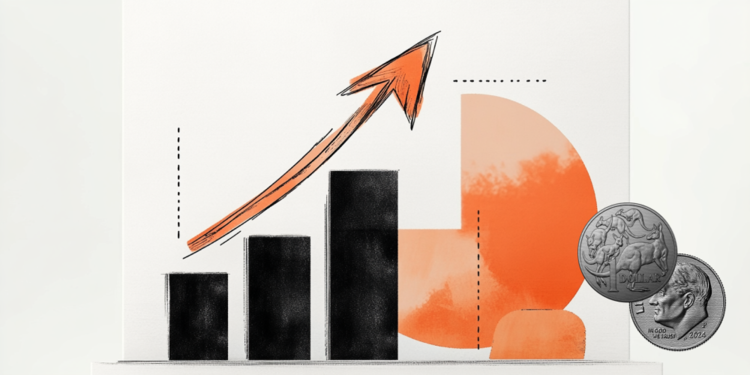- AUD/USD flirted with three-week highs, approaching the 0.6400 level.
- The US Dollar plummeted to multi-month lows post-Trump’s tariffs.
- Stock markets collapsed as investors digested “Liberation Day”.
The Australian Dollar (AUD) extended its weekly rebound in style, encouraging AUD/USD to come closer to the key 0.6400 threshold and flirt with multi-week highs on the back of the deep sell-off in the US Dollar (DXY).
The pronounced drop in the Greenback sent the US Dollar Index (DXY) to levels last visited in early October in the 101.30-101.20 band amid an equally sharp downtick in US yields across the spectrum, all amid investors’ adjustment to the recently announced tariffs by the White House.
Rising global trade war fears
In the meantime, concerns about a transatlantic trade war did nothing but escalate in past hours, especially after President Trump hit US trade partners with a new round of tariffs from 10% to around 50%.
This measure might surely prompt countries to implement retaliatory measures, therefore sparking a global trade war with serious impact on the economic activity, as well as consumer prices and monetary policy decisions by central banks.
The Aussie, closely tied to global risk appetite and Chinese demand for commodities, remains vulnerable to any slowdown in China and is expected to remain wary on any impact from US tariffs.
Fed on a tightrope
Across the Pacific, the Federal Reserve (Fed) faces its own delicate balancing act. Escalating trade tensions could drive inflation higher, potentially justifying further rate hikes. Yet early signals of a cooling US economy make a strong case for caution—despite employment data remaining healthy.
At its March 19 meeting, the Fed held the benchmark rate at 4.25–4.50% and maintained a “wait-and-see” approach. Fed Chair Jerome Powell emphasized caution, noting forecasts of slower growth and marginally higher inflation—both of which could be amplified by impending tariffs.
RBA steady amid uncertainty
In Australia, the Reserve Bank (RBA) kept its Official Cash Rate (OCR) at 4.10% on Tuesday, a move widely anticipated by markets. Notably, the RBA dropped its prior reference to being “cautious on prospects for further policy easing,” instead pointing to persistent risks on both sides of the economic equation.
During the post-meeting press conference, RBA Governor Michele Bullock acknowledged less-than-complete certainty about inflation’s path toward the 2–3% target range. She also noted that the decision to keep rates unchanged was unanimous, with no direct talk of cuts. Following the announcement, the odds of a 25-basis-point cut at the May 20 meeting slipped to 70%, down from 80%.
Bears bet on the Aussie
In the background, traders continued to ramp up bearish bets on the Australian Dollar. The latest CFTC data shows net short positions hovering near 80K contracts as of March 25—a multi-week high that has risen steadily since mid-December amid escalating tariff concerns.
Technical signals for AUD/USD
A convincing break above the 2025 peak at 0.6408 (February 21) would pave the way for a run at the 200-day SMA near the 0.6500 milestone, with the November 2024 high of 0.6687 looming as the next major hurdle.
On the downside, initial support stands at the March low of 0.6186 (March 4). A clear move below that floor would expose the 2025 trough at 0.6087, just above the psychological 0.6000 mark.
Meanwhile, the Relative Strength Index (RSI) inching toward 60 suggests a fresh revival of upside momentum, but the subdued Average Directional Index (ADX) around 11 implies a still-weak overarching trend.
AUD/USD daily chart
In essence, the Aussie Dollar’s short-term bounce remains at the mercy of unfolding trade tensions, China’s economic signals, and the delicate policy manoeuvres of central banks on both sides of the Pacific.

